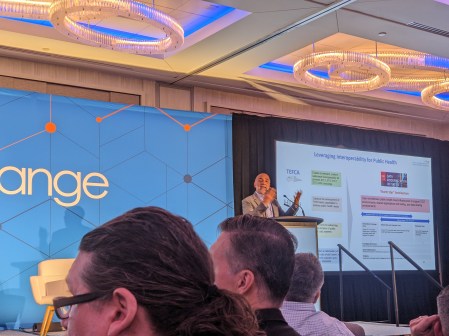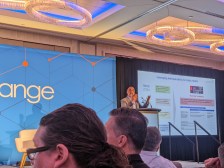As agencies continually release public-facing mobile apps to better serve American citizens, the directors and strategists behind their creation are the first to admit there is room for improvement.
“In my world, smartphone apps have failed. They have not lived up to their potential. And the reason for that is they’re easy to ignore, and they’re easy to delete,” said Erik Augustson, director of SmokeFree.gov with the National Cancer Institute, in reference to apps he’s worked with that use technologies to deliver behavioral interventions.
Despite an abundance of smartphone-wielding Americans, Augustson and his colleagues speaking at a panel during the Federal Mobile Computing Summit said they still struggle with user experience building mobile applications — that is, creating an app that is useful to a given audience.
User experience, though, varies greatly from agency to agency and app to app. For instance, Lisa Wolfisch, deputy director of the Census Bureau’s Center for New Media and Promotion, said her agency’s main concern when building its three recently-released apps — which are highly-touted within the federal space — was making a vast amount of information fit a tiny screen while keeping the user engaged.
The Department of Homeland Security’s Office of Emergency Communications had very different concerns.
“How does an application that’s specifically used for fire, for example, get utilized with somebody who’s got thick gloves on their hands?” asked Alex Kreilein, technology policy strategist in DHS’s OEC. Likewise, he said, “Public safety often times works 10 to 12 hour shifts. A smartphone is not going to last that long.”
It’s not an easy task, but most agencies have user experience in its crosshairs and are working toward making more useable apps.
“At the end of the day, my work is about humans,” Augustson said. “So trying to strike this balance of creating a technology that is useful, it turns out, will probably be the main challenge that we face.”
For Kreilein and DHS, that means calling in the pros in the private sector to get outside of traditional government-think to produce thoughtful applications.
“We don’t build applications. In fact, I don’t ever want to build an application because I’m a really bad developer,” he said. “But more importantly than that, what we really want to do is get outside of the normal and traditional way for contracting and developing applications, but also we want to try to get outside the Beltway to get some development from the private sector corporation and individuals.”
Another strategy to build a better user experience is working with other agencies, essentially the job of panelist Joshua Parcell, manager of mobile programs for the General Service Administration’s Office of Citizen Services and Innovative Technologies.
“One of the big pieces we’ve been working on is a crowdsourced testing program where feds are helping feds test mobile products,” Parcell said. His office acts as a community of practice to showcase and share the mobile projects of agencies governmentwide and assist them in their development. Another working project of Parcell’s is a “mobile code chop shop” to help agencies better their apps and then share that code with others who might find it useful.
Certain federal agencies have made progress entering the mobile space, but Parcell said there is one question they must ask if they want to be successful in chasing “an ever-moving target.”
“How is the user going to use a mobile app in a way that’s different?” he said. While agencies are beginning to realize that and have begun crafting better mobile practices, he said, “I don’t think any agency in the federal government has said ‘this is the perfect mobile strategy.'”






